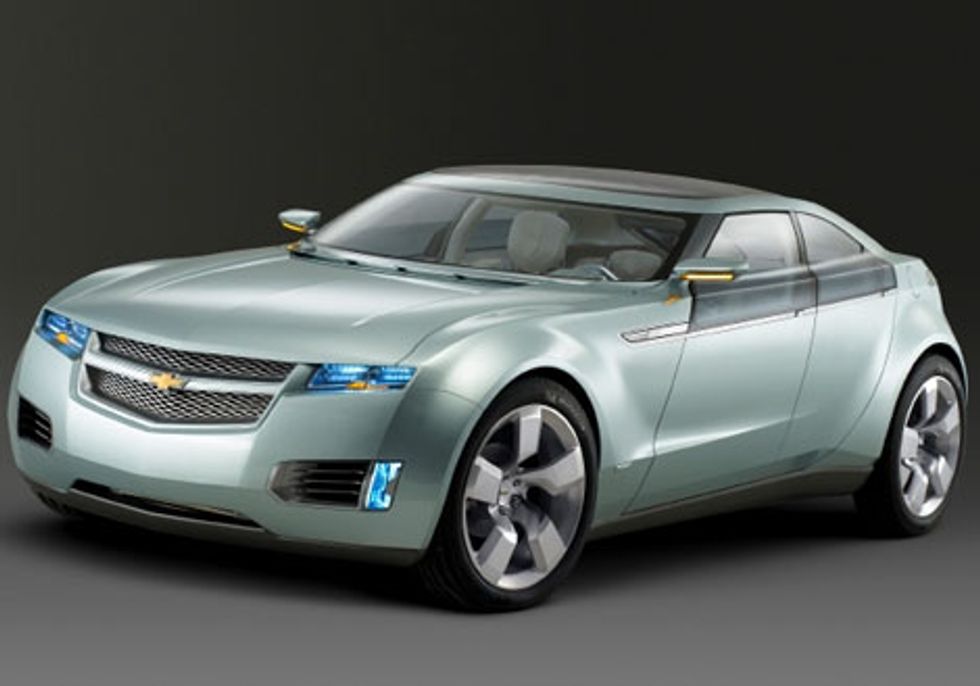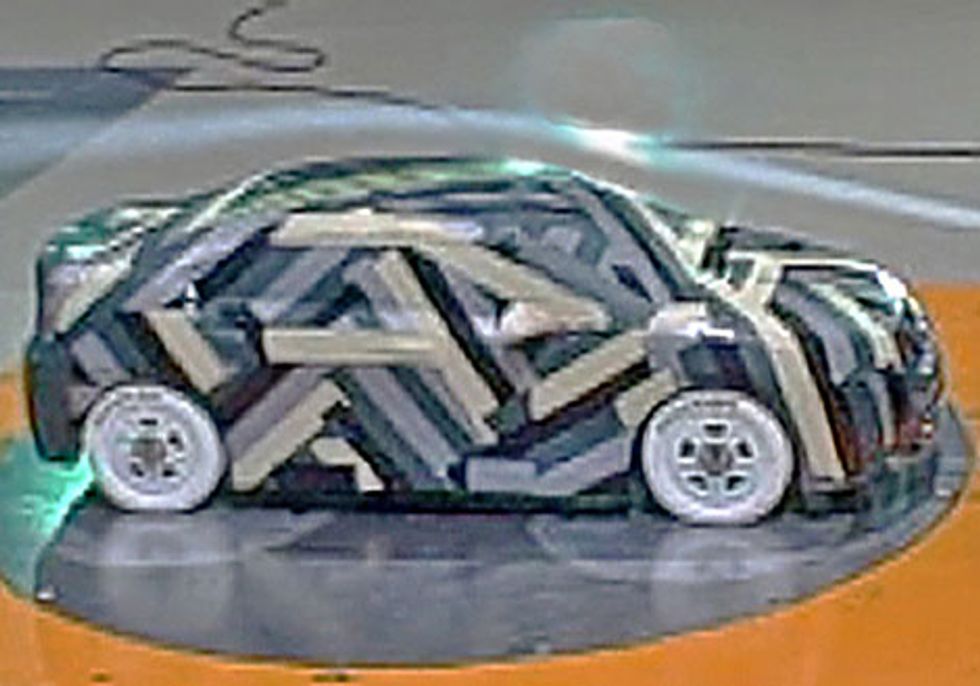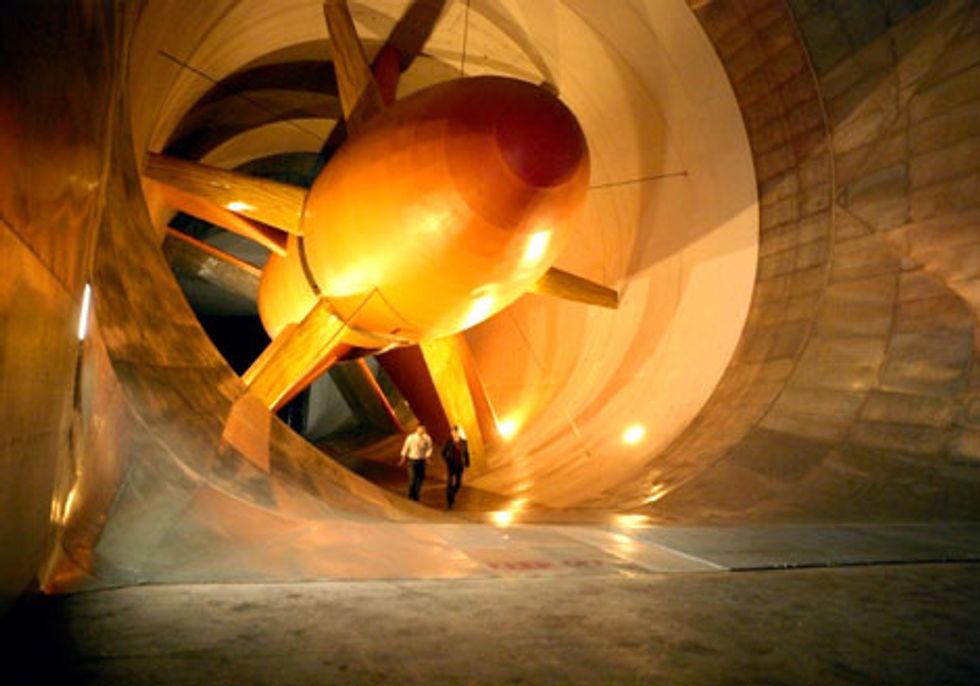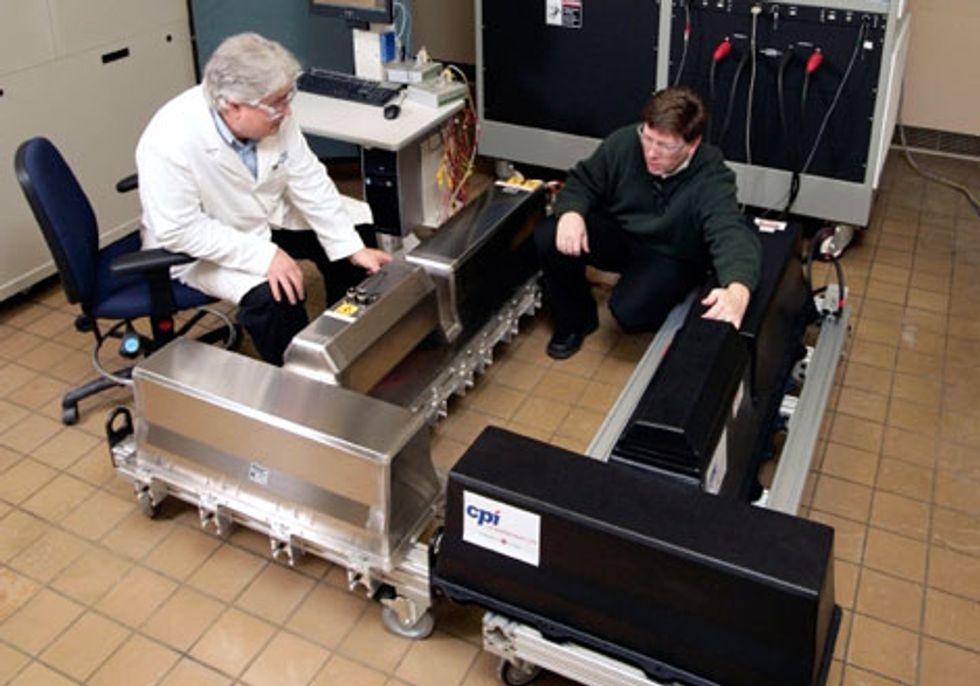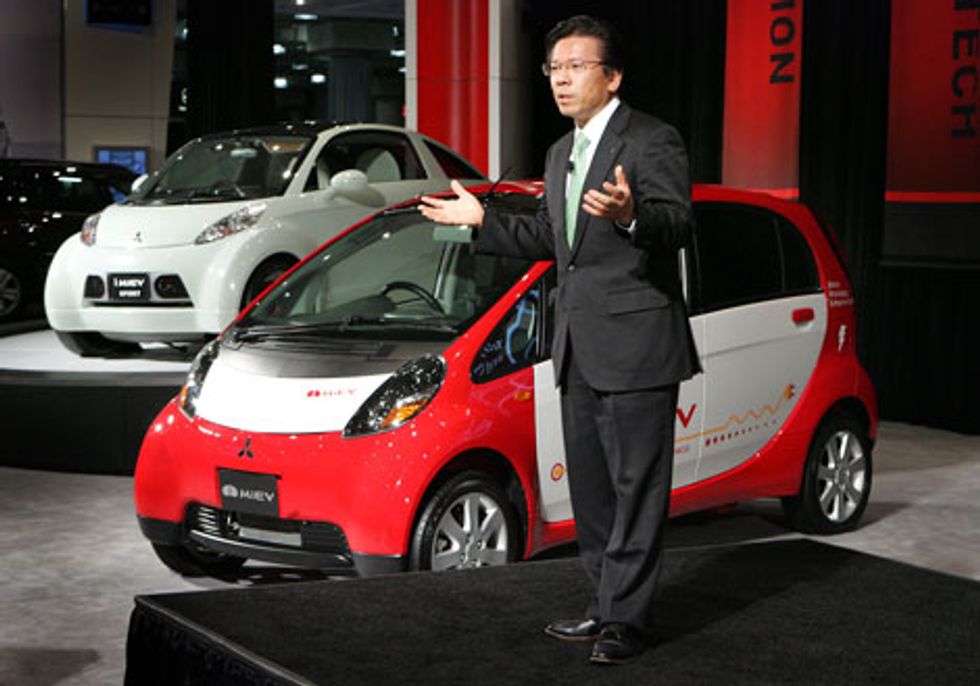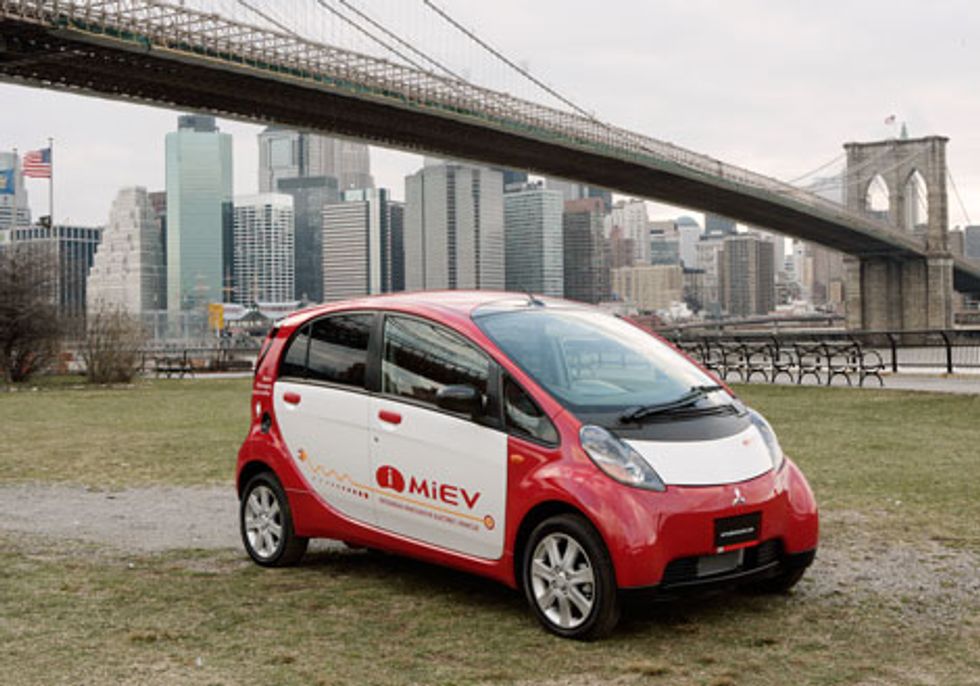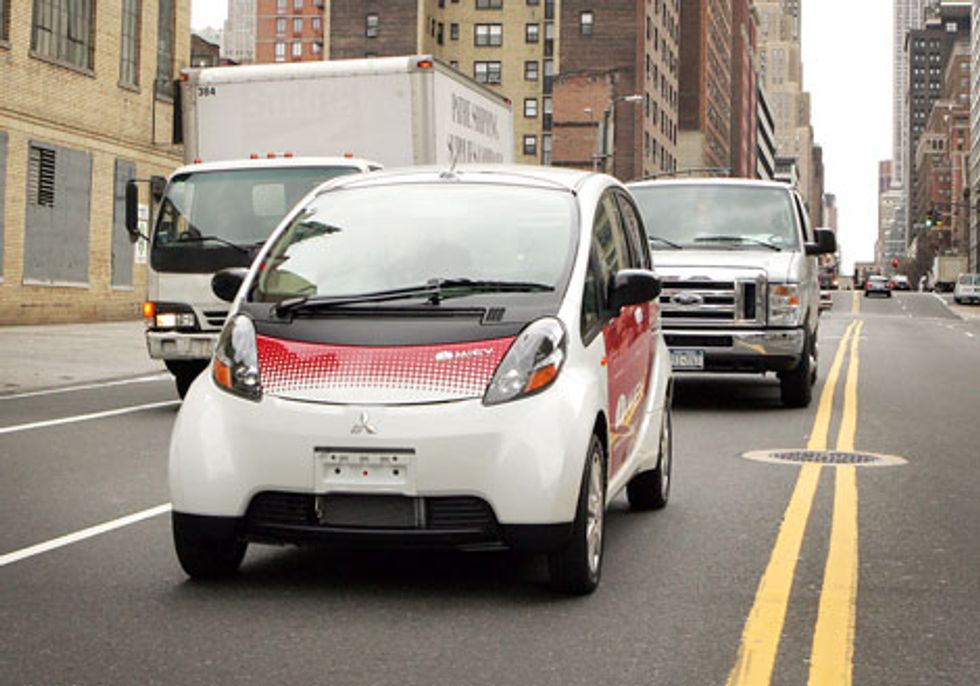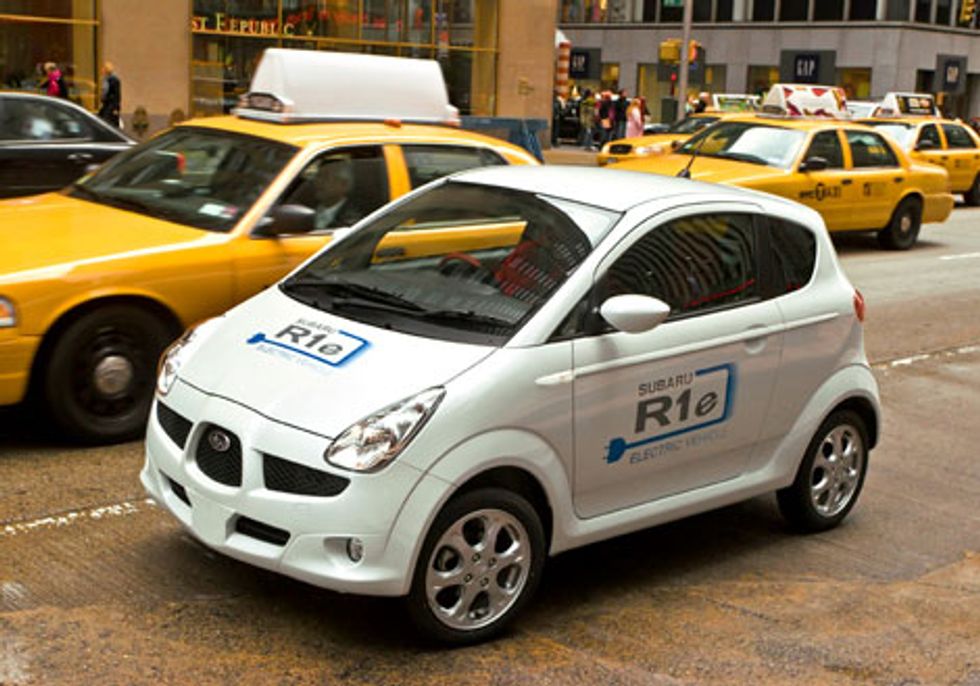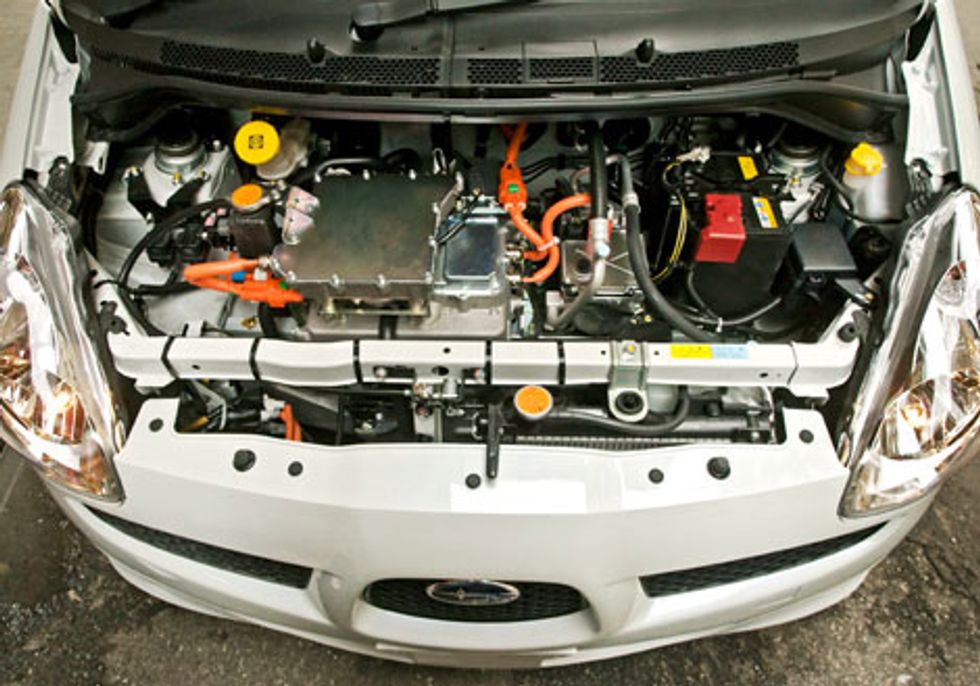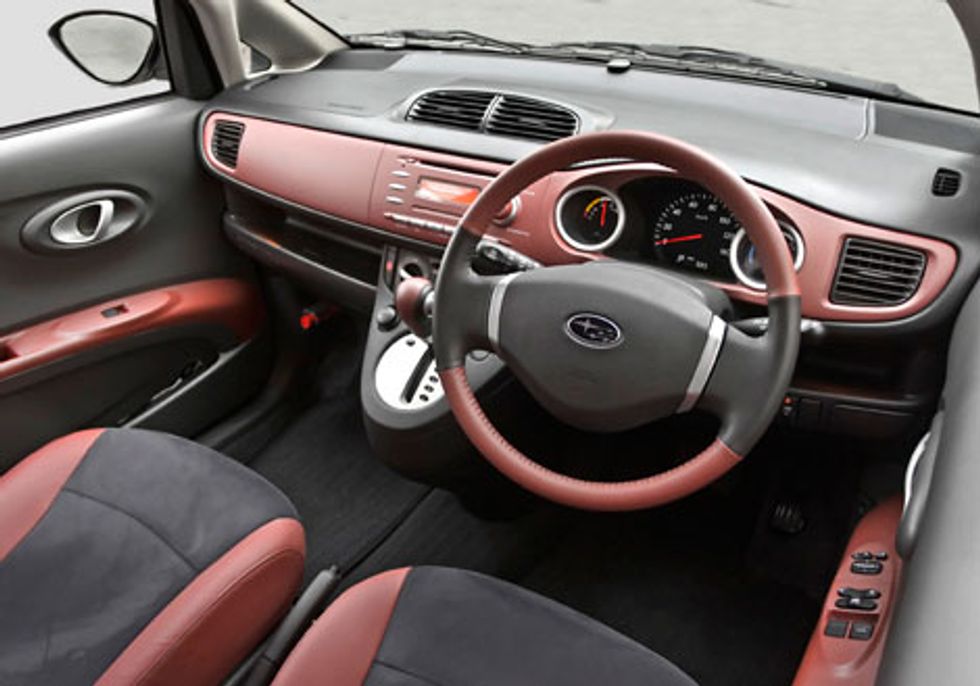For more on electric vehicles, see EV ROUNDUP: ELECTRIC VEHICLES MOVE FORWARD...SLOWLY
By now, the shape of the Chevrolet Volt concept car, unveiled in January 2007, is familiar to engineers, auto fans, and the general public. The ”electric Camaro” appearance was striking but proved to be woefully unaerodynamic.
For more on electric vehicles, see EV ROUNDUP: ELECTRIC VEHICLES MOVE FORWARD...SLOWLY
For more on electric vehicles, see EV ROUNDUP: ELECTRIC VEHICLES MOVE FORWARD...SLOWLY
This image, taken from a video, is the sole indicator of what the production Volt is likely to look like. Note the high, truncated Kamm tail, the steep rake of the windshield pillars, and the swept-back front end with its substantial overhang—all in the service of reducing aerodynamic drag.
For more on electric vehicles, see EV ROUNDUP: ELECTRIC VEHICLES MOVE FORWARD...SLOWLY
For more on electric vehicles, see EV ROUNDUP: ELECTRIC VEHICLES MOVE FORWARD...SLOWLY
This GM wind tunnel, put into service in 1980, operates 24 hours a day to help designers and engineers achieve the lowest coefficients of drag on their vehicles. The fan’s six 13-meter blades of laminated Sitka spruce, driven by a 3350-kilowatt dc motor in the nacelle, create winds of up to 220 kilometers per hour.
For more on electric vehicles, see EV ROUNDUP: ELECTRIC VEHICLES MOVE FORWARD...SLOWLY
For more on electric vehicles, see EV ROUNDUP: ELECTRIC VEHICLES MOVE FORWARD...SLOWLY
These two T-shaped 16-kilowatt-hour battery packs, one from Compact Power and one from Continental Batteries, are being run through a two-year routine of constant cycling in a battery lab, meant to simulate 10 years of customer use. Unlike laptop batteries, automotive energy batteries must last 10 years.
For more on electric vehicles, see EV ROUNDUP: ELECTRIC VEHICLES MOVE FORWARD...SLOWLY
For more on electric vehicles, see EV ROUNDUP: ELECTRIC VEHICLES MOVE FORWARD...SLOWLY
Tetsuro Aikawa, who runs product development for Mitsubishi Motors, announces that fleet testing of its i-MiEV electric vehicle will begin in the United States this fall. The prototype is powered by a 330-volt lithium-ion battery powering a 47-kW permanent-magnet electric motor.
For more on electric vehicles, see EV ROUNDUP: ELECTRIC VEHICLES MOVE FORWARD...SLOWLY
For more on electric vehicles, see EV ROUNDUP: ELECTRIC VEHICLES MOVE FORWARD...SLOWLY
A ”beauty shot,” taken for the New York International Auto Show last month, shows the all-electric Mitsubishi I-MiEV on the Brooklyn waterfront. The famous Brooklyn Bridge and the skyline of lower Manhattan are in the background.
For more on electric vehicles, see EV ROUNDUP: ELECTRIC VEHICLES MOVE FORWARD...SLOWLY
For more on electric vehicles, see EV ROUNDUP: ELECTRIC VEHICLES MOVE FORWARD...SLOWLY
Another New York City shot, of a different prototype, shows a typical street scene. But at just 3.4 meters long, the electric I-MiEV is smaller than it looks here—and perhaps one-third the weight of the full-size Ford truck shown behind it.
For more on electric vehicles, see EV ROUNDUP: ELECTRIC VEHICLES MOVE FORWARD...SLOWLY
For more on electric vehicles, see EV ROUNDUP: ELECTRIC VEHICLES MOVE FORWARD...SLOWLY
Also announced at the New York International Auto Show was the Subaru R1e. Like the Mitsubishi, it is a Japanese-market minicar adapted to full electric operation using a battery pack—although Subaru did not specify the pack capacity.
For more on electric vehicles, see EV ROUNDUP: ELECTRIC VEHICLES MOVE FORWARD...SLOWLY
For more on electric vehicles, see EV ROUNDUP: ELECTRIC VEHICLES MOVE FORWARD...SLOWLY
The 40-kW electric motor, inverter, and control electronics fit under the R1e’s short hood with room to spare. Japanese minicars are limited in their power, but even the gasoline R1’s offer 0.66-liter engines from 34 kW to 47 kW, giving an idea of the small scale of this small two-door car.
For more on electric vehicles, see EV ROUNDUP: ELECTRIC VEHICLES MOVE FORWARD...SLOWLY
For more on electric vehicles, see EV ROUNDUP: ELECTRIC VEHICLES MOVE FORWARD...SLOWLY
Both the Subaru and Mitsubishi electric cars to be tested in the States have right-hand-drive, as they’re sold largely in the Japanese home market. Neither car meets U.S. federal safety standards, so they must be exported—or destroyed—after the manufacturers finish their tests.
For more on electric vehicles, see EV ROUNDUP: ELECTRIC VEHICLES MOVE FORWARD...SLOWLY
